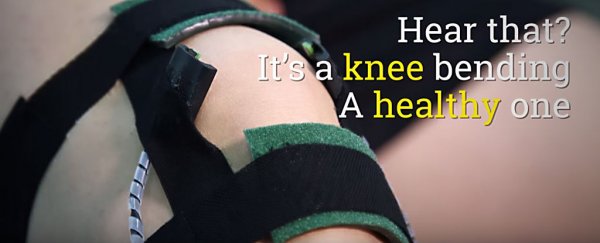
If you skated a bunch when you were a teenager, or you sleep next to someone who did, you'll know the creaky knees phenomenon all too well. But what might come as a surprise is the fact that even the most pristine knees sound like they're being wrenched apart by some kind of medieval torture device when you apply super-sensitive mics to the area and start flexing, as the video above demonstrates.
Feel like you're going to be sick after watching that? Yep, same. Go huddle up in the corner and recuperate, I'll wait.
So what was that horrible sound? A team from Georgia Institute of Technology has been investigating ways that will allow them to tell a healthy knee from a bad 'crunchy' knee, without having to open it up or run a bunch of X-rays and scans.
They're working on a new high-tech knee band that's got microphones and vibration sensors embedded in the fabric that can detect and measure sounds produced deep within the joint.
The mics are made from piezoelectric film, which is designed to measure changes in pressure, acceleration, temperature, strain, and force by converting them to an electrical charge. Once a patient is strapped in, the mics and sensors will get to work, and produce audio graphs that visualise how consistent or erratic the various crunches and creaks - known as 'crepitus' - are.
According to Madison Margolin at Motherboard, the more consistent the creaks, the healthier the knee.
"I actually feel like there's some real information in [the noises] that can be exploited for the purposes of helping people with rehab," lead researcher and engineer, Omer Inan, told Christopher Intagliata at Scientific American.
"It's a little bit like some kind of Halloween stuff happening," he admitted. "You're listening to your bones rubbing on each other, or maybe cartilage."
Having described the technology in the journal IEEE Transactions on Biomedical Engineering, Inan and his team will now be working on getting it ready for public use, with everyone from athletes and soldiers to the elderly and the disabled looking like prime candidates for a device that can read knees.
Let's just hope they don't have to listen to their own knees, because noooo thank you.
If you can't get enough of cracking bones, here's some great knuckle-cracking action for you:

